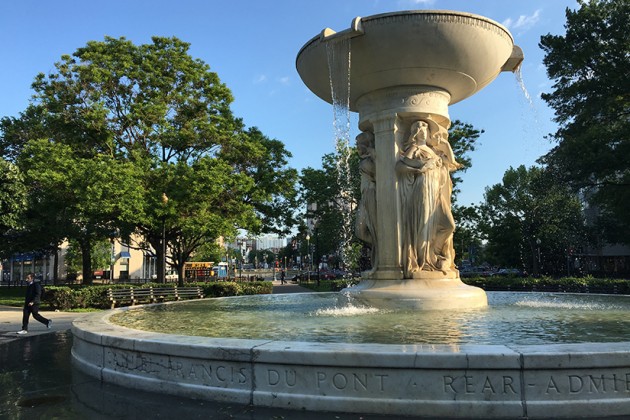
|   1877 "Peace and Vigilance," Old Post Office, N 8th St at Olive St, St. Louis, Missouri (USA). By renowned artist Daniel Chester French [1850-1931]. Moved indoors in 1989. "Vigilance is on the ball. She is alert, scanning the horizon. Her posture is relaxed, but a sword is ready in her right hand. Peace, on the other hand, is harder to interpret. She holds an olive branch in her left hand (I don't know if the lefty olive has a meaning) but, frankly, she looks depressed rather than peaceful. Maybe her lover left, her dog died and, as the old Commander Cody song has it, she's down to seeds and stems again, too. The eagle shrieks over the whole scene. Vigilance might appreciate the scouting help, but how is Peace going to get any, well, peace with that screaming bird over her head? Maybe that's why she's depressed." 1877 "Peace and Vigilance," Old Post Office, N 8th St at Olive St, St. Louis, Missouri (USA). By renowned artist Daniel Chester French [1850-1931]. Moved indoors in 1989. "Vigilance is on the ball. She is alert, scanning the horizon. Her posture is relaxed, but a sword is ready in her right hand. Peace, on the other hand, is harder to interpret. She holds an olive branch in her left hand (I don't know if the lefty olive has a meaning) but, frankly, she looks depressed rather than peaceful. Maybe her lover left, her dog died and, as the old Commander Cody song has it, she's down to seeds and stems again, too. The eagle shrieks over the whole scene. Vigilance might appreciate the scouting help, but how is Peace going to get any, well, peace with that screaming bird over her head? Maybe that's why she's depressed."
|












